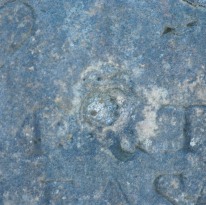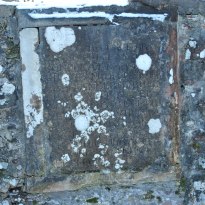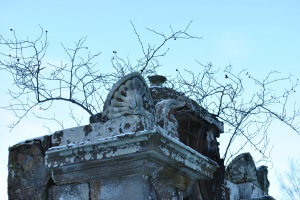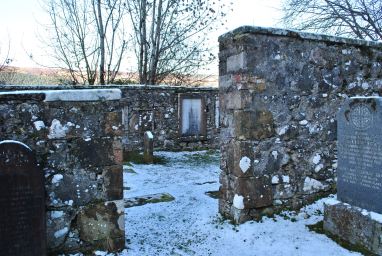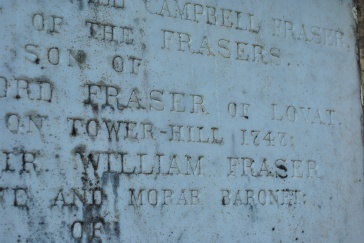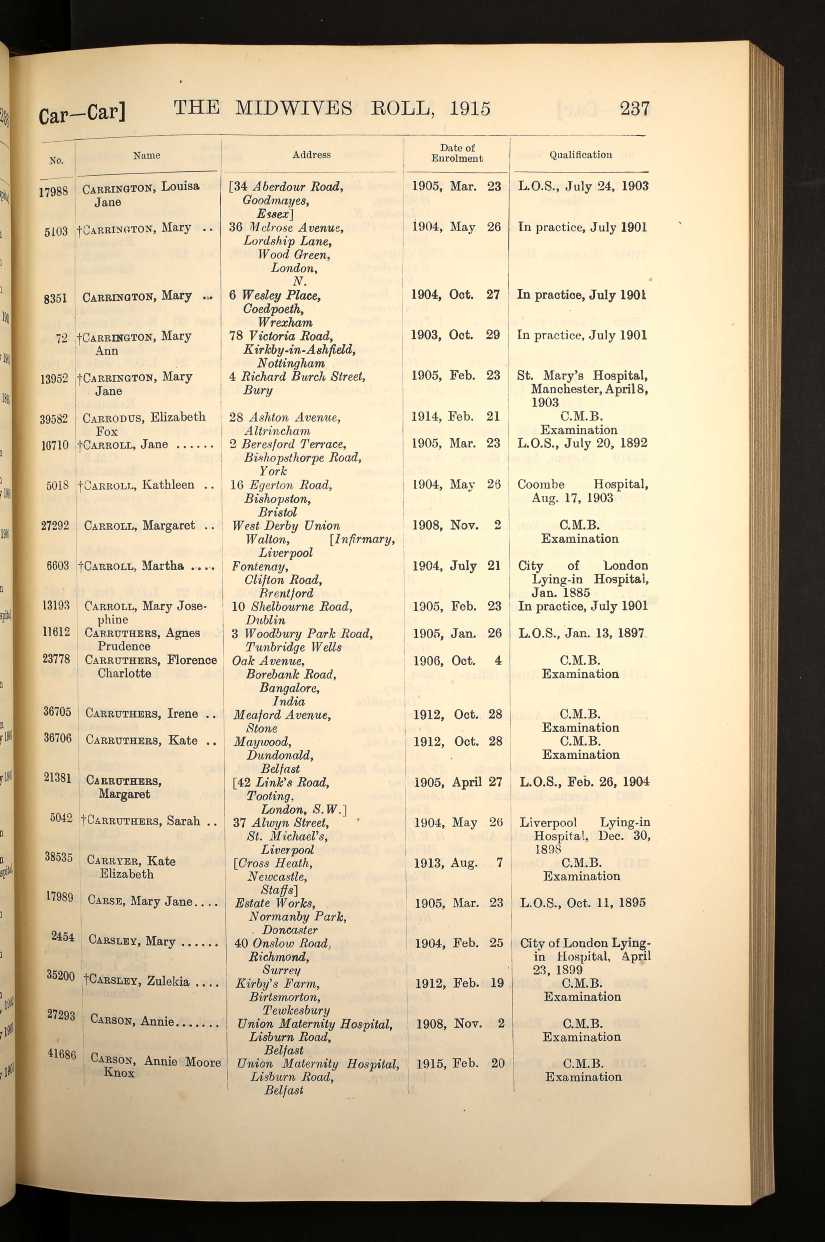
BORDER REIVERS:
DO YOU REALLY KNOW WHO YOU ARE?
I know what I am. I’ve always known what I am. When my maternal great great grandfather Arthur Scott changed his place of birth from Canonbie a couple of miles across the border to Bewcastle when he applied for a good game-keeping job down in Lancaster in the early 1900s, he knew what he was too. A borderer. It didn’t take him long to bring his family back North, though.
I was told from childhood that my forebears had constantly switched sides, that ‘the English don’t want us, and the Scottish won’t have us,’ that nationalism was a mug’s game – that what mattered was Family first. This must have been an oral tradition carried down through the generations, on both sides, for more than a couple of hundred years.
I’ve always lived on the anglo-scottish border. The smudge of purple heather on a hillside, the slopes of scree running down to a burn, the dank, dark isolation of a wood carpeted in the brown decay of pine needles – this is where I feel most at home. I can tell you where the badger setts are, the pools where the deer drink at dawn, the streams where the fish run; I can tell you the names of the grandparents, and where they hailed from in the days when the peat reek smoked from the chimney pots of grey sandstone buildings clustered around the winding silver band of a river. And if I don’t, I’ll know somebody to ask.
I played in the castles and bastles with my friends, remember vividly thinking that I’d find a sword or a helmet on my first visit to Flodden Field, picked beagies and tatties from farmer’s fields. Poked sticks in sodden land covered in frogspawn; built camps and dens in high bracken, watched adders basking curled on rock and took home their spent skins for bookmarks.
So it’s frustrating when you read tales that all the families were scattered to far off exotic lands or wiped out at the end of a rope after 1603. It’s irritating when the revisionist literature of incomers and academics is given weighty preference. You can’t re-write the stories that aren’t just penned on a page but carried on in the names of the folk on the farms, sheep bleating high on a hillside and the steam off the curious cattle’s backs tight in a corner by a dry stone dyke.
Sure, hundreds did get hanged and many others fled across to Ireland to avoid justice – but many of them came back when the heat was off, and others continued their trade in stolen horses and cattle with beasts lifted from home and shipped across the water.
Many of the reiving families just stepped up into the positions of power, somewhat like the Sicilian Cosa Nostra did after the liberation of the island during the Second World War. While it is well known that Walter Scott of Buccleuch, who had spent the bulk of the early Pacification away in Holland with a band of Borderers fighting Catholic Spain, and his brother-in-law Sir Robert Kerr did both take up positions alongside the Commissioners of the ‘Middle Shires’ in bringing people to justice, they also secured employment for some of their old allies to do the job.
Will ‘Redcloak’ Bell of Blacket house, the chief of the Bells and a reiver of note, was working for the commission in 1624 alongside some equally notorious Johnstons, for example. Walter Scott’s son the Earl of Buccleuch similarly secured employment on ‘special points of service’ for six reivers in addition to the initial ten he had been appointed. Francis Armstrong in Whithaugh, the brothers Alexander and William Armstrong, called of Kinmont, Gavin Johnston called of Redhall, Rob Jardine called of Brierhill and Simon Elliot in Benks all became paid Government officers. How much did this change them? Well, Simon Elliot in Benks was hanged for his offences in 1637, so the answer has to be – not at all.
Other people that were taken to a gibbet and dropped that year included Hector’s Richie Irving, James Johnston of Kirk, John Beattie of Tannahill, John Pollock, Fergus Linton, Richard Coulthard, James Forrester, the brothers David and Robert Scott of Hawick, Robert Graham in Beggerraw, Andrew Graham in Oldface, Arthur Hare, Andrew Scott called of Bents, Simon Elliot called of Blackhead, Simon ‘Baitties Sim’ Armstrong, Thomas Heslop, Andrew ‘Little Andrew’ Scott, Alexander Henderson, William French, James Johnston, Adam Gillespie, John ‘the pedder’ Davidson, John Elliot in Starricleuch, James Taylor in Clifton, William Pringle in Hownam, Alexander Hall in Chatto, Walter Mow in Oldsheugh and Hercules Croser – the usual suspects, in the main. Archibald Armstrong of Hollows was another hanged that year. His relation Cornelius Armstrong of Hollows, the son of John, had got in some bother while drinking in Matthew Murray’s house at Milleyes on the Esk in 1628. Armstrong fell out with a man called William Whippa and although the lads they were drinking with had pulled them apart after the argument, Whippa then pulled out his sword and struck three ‘great and bloody wounds’ on Armstrong’s arm.
However, when Armstrong complained that the assault had thus ‘disappointed him of the service he had undertaken under the Earl of Buccleuch in the Wars in Holland,’ you have to wonder if it wasn’t actually done on purpose to get him out of that military service on a technicality. Whippa was declared a fugitive 13 months later when the case came to court.
The Commissioners on the Scottish side complained that three of the Armstrongs had come up with a new scheme for evading justice that year and that Edward, called Kinmont, Hector ‘Eckie of Stubholme’ and John ‘Handles’, who were all labelled common and notorious thieves, handlers of stolen goods and declared fugitives for those crimes, had ‘fled over the march and allowed themselves to be taken by their friends and allies’ who ‘for a coloured show’ had committed them to jail in Carlisle (where they lived at full liberty without restraint) and were looking to secure them a pardon. There’s more than one way to skin a horse.
While thieving was obviously still a problem, some of the biggest issues of disorder came from men still carrying firearms and violent attempts to grab land at that time. Andrew Murray of Moryquhat was a serving member of the Middle Shires commission in 1624. Two years earlier he had been embroiled in a bitter struggle with the Carruthers over that land at Moryquhat, in just one example of what was happening regarding land ownership –and it was happening all over the border. The Carruthers had turned up with their ploughs twice in two months on the land. But it wasn’t just agriculture that they had in mind; the gang were armed to the teeth, and they had every intention of using their weapons.
When Murray turned up to ask them what they were doing in the first instance, in the December of 1621, the gang ‘set upon him with drawn swords and lances, chased him to his own house, and would have killed him had not he reached his house and shut himself in. They then lay about the complainer’s house ‘from the sun rising to one hour before the sun set.’
John Carruthers of Holmains, with George, his brother, James Carruthers of Datounheuk, Charles Carruthers called of Yle and 60 others including Simon Green in Wyneholme, Thomas Elliott, John Corrie in Cartertoun hill, John McWittie in Lochbrow, Robert Rodgerson in Chappell, John Graham in Crawford, Symie Scott in Pyetschawis, David Mitchell in Johnstonhill and James Mitchell in Bartanners were the offenders.
The Carruthers John of Holmains, his brother George, James of Datounheuk and Charles, called of Yle, were back to the land with their ploughs again in the February, and they brought an even heavier squad – most of them being noted as ‘rebels, fugitives and outlaws’ – with them, including John Carruthers, the son to Will of Denbie, Gavin Walker in Dattoun, John Gibson in Kirkwood, John Carruthers called ‘Rowies Jock’ in Datoun, John Henderson called Gibbies Jock, John Carruthers, the son of Simon Carruthers of Yle, William Carruthers of Denbie, Francis Carruthers in Datoun, and the rest of their accomplices. Again they attacked Murray with swords and lances and ‘would have slain him had he not escaped from them on horseback and fled to his own house.’ They followed him to his house and “set about the same on all parts and besieged him therein all that day,” continually shouting and provoking him to come forth.’ John of Holmains, George, his brother, Charles called of the Yle, James of Datoun, and John, son to Will Carruthers of Denbie – were found guilty of riot and ordered to be detained at the tollbooth in Edinburgh while also paying fines of £100 each as the old families struggled to maintain their wealth and power.
The noted old reivers John ‘the Chief’ Hall, John ‘Black Andrew’s Jock’ Hall, both of Newbiggin, George ‘Windylaws’ Douglas in Jedburgh, Patrick Turnbull in Makside, Robert Weddell and William Robson in Old Jedburgh had spent four years poaching with pistols, hagbutts, bows and other weapons for deer on Robert, the Earl of Roxburgh’s lands and by 1623 he brought them up on charges. They denied them, of course, although Robson admitted wearing hagbutts across the border in England. They were also handed hefty £100 fines. Kerr also turned on his former associates closer to home; John Burn of the Cote, Andrew Young, the son of Walter Young of the Know, Mark and Ralph Hope, the Earl’s former servant John Campbell and a man called Deippa in Kelso were all to be apprehended as ‘the crimes of theft, reset of theft, inbringing of thieves and outputting of men’s goods has of late years become very frequent and common.’ So much for the 1618 claims that the Middle Shires were free of theft, and note how the reivers that were supposedly ‘pacified’ between 1605 and 1611 in the main purge were still there, not in Ireland or the grave.
Want to see references for all that? You want to give me a Masters? This is journalism, not academia, man. Think I’ll give up all my sources for some dubious internet hack to pilfer? Whey aye. Haha. Do you believe that because I speak in a broad Coquetdale accent that I’m some rustic, rural character chewing on a piece of straw? Get your cash out, son. Us borderers like to get paid. I know what I am. Do you?

OFFICIAL AND OLDEST SCOTTISH CLAN CARRUTHERS
SINCE 1983-CLAN OF OUR ANCESTORS
MERITED TO CHIEF CARATOCUS 10AD
PRESENT CHIEF : PAT E CARROTHERS USA
John T Carruthers , Glasgow Scotland
Dr Patricia Carrothers CHS
CLAN CARRUTHERS HISTORIAN AND GENEALOGIST

Preserving Our Past, Recording Our Present, Informing Our Future
Ancient and Honorable Clan Carruthers
clancarruthers1@gmail.com

You can find us on our main facebook pages at :
SILVER WINGS-https://www.facebook.com/CarruthersClanLLC/
GOLD WINGS – https://www.facebook.com/carrutherscarrothers.pat.9
COPPER WINGS https://www.facebook.com/ClanCarruthers1/
CLAN CARRUTHERS FAMILY HISTORY – https://www.facebook.com/CarruthersClan
CLAN CARRUTHERS CCIS – https://www.facebook.com/groups/3878691252182714
CLAN CARRUTHERS INT SOCIETY- https://www.facebook.com/groups/394653845137709
CLAN CARRUTHERS – BORDER REIVERS – https://www.facebook.com/groups/434959914239094
Disclaimer Ancient and Honorable Carruthers Clan International Soci








